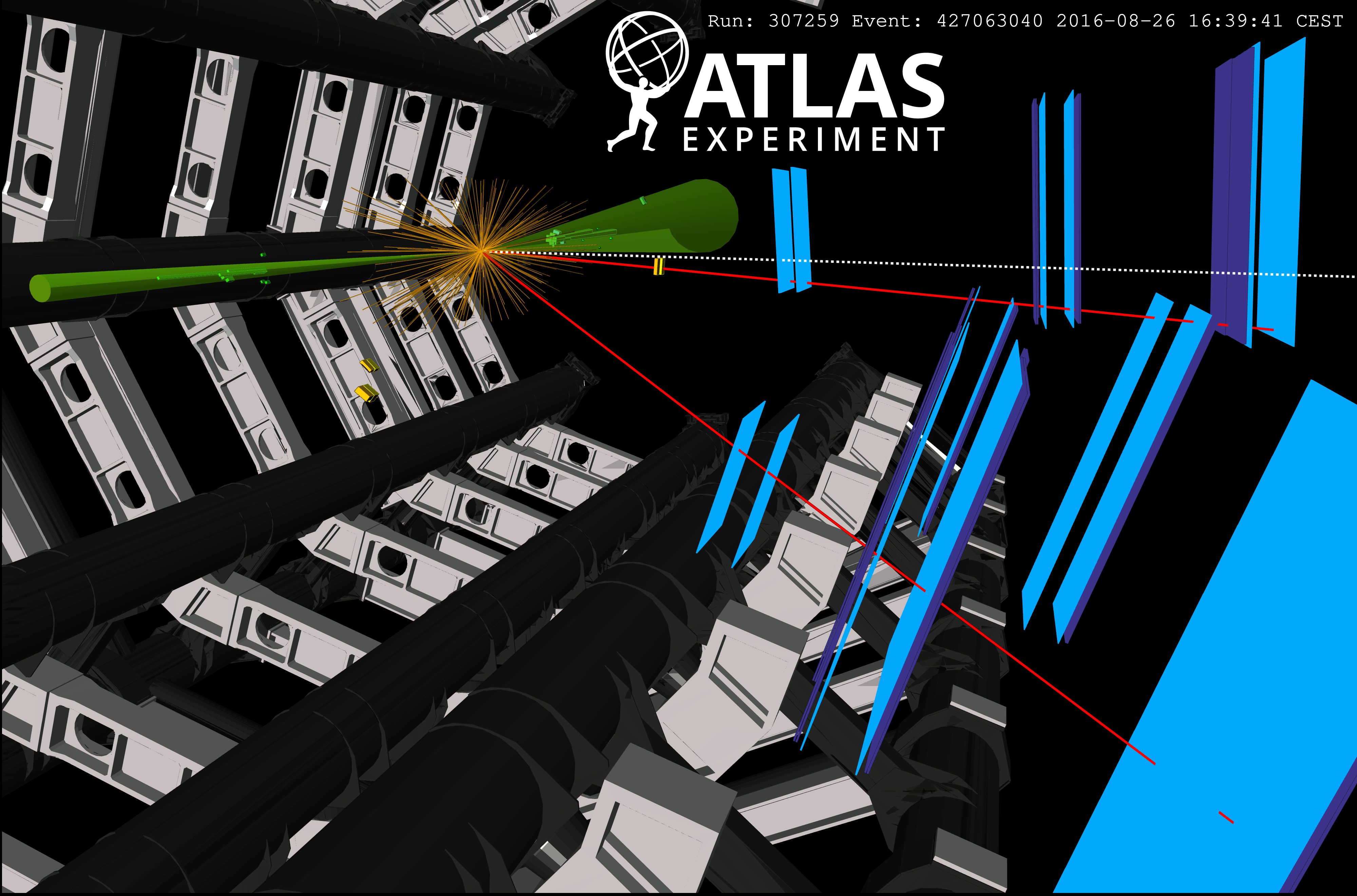In search of rare Higgs boson production with top quarks
24 March 2015 | By
In proton-proton collisions, several processes can lead to the production of a Higgs boson. The most “frequent” process (which is about one collision in four billion!) is the fusion of two gluons, contained in the initial protons, into a Higgs boson through a “top-quark loop”, as in Figure 1a, a process known as gluon fusion (ggF). Next comes the fusion of two W or Z bosons, radiated by initial quarks (VBF), as in Figure 1b. ATLAS has already shown evidence for these two production modes. The third mode is the associated production of a Higgs boson with a W or Z boson, Figure 1c. Least frequent is a mode where the Higgs boson is produced in association with a pair of top-quarks or ttH, as in Figure 1d.
This last process is rare, with a predicted probability of only half a percent of all Higgs boson production modes, but it is highly interesting: indeed its observation would provide a unique, direct measurement of the coupling of the Higgs boson with top quarks. In the Standard Model, the strength of the coupling of the Higgs boson to fermions (matter particles, such as quarks and electrons) is predicted to be proportional to the particle’s mass. The top quark, being the heaviest of all known fermions, has a particularly strong coupling strength to the Higgs. This has numerous consequences including in the extrapolation to high energies or even in calculations related to questions such as the stability of the universe.
ATLAS performed searches for this rare ttH process using data collected in 2012 at 8 TeV, where the Higgs boson decays in a variety of ways, including into fermions (bb, ττ: a candidate event is shown in Figure 2), and into bosons (WW, ZZ) in particular when they decay into llvv and 4lrespectively, and these latter decays channels have been analysed for the first time by ATLAS. The top quarks decay each almost always into a W-boson and a b-quark, with each W-boson also decaying into either a lepton and neutrino, or two quarks. Neutrinos do not interact with ATLAS and therefore are inferred by a missing amount of momentum in the transverse plane, and quarks are seen as jets of particles in the ATLAS detector. This makes a very complicated analysis encompassing many particle configurations to analyse.
In the Standard Model, the strength of the coupling of the Higgs boson to fermions (matter particles, such as quarks and electrons) is predicted to be proportional to the particle’s mass. The top quark, being the heaviest of all known fermions, has a particularly strong coupling strength to the Higgs.
The data from the different decay channels were combined together revealing a small excess of ttH signal events over background with a signal strength μ(ttH) =1.80 + 0.84 -0.74, where μ = 1 corresponds to the Standard Model prediction. This gives a significance of 2.4 standard deviations with respect to the no-ttH hypothesis. Further data must be gathered during the next run of the LHC to enhance the signal. The higher proton–proton collision energy of the LHC Run 2 will increase the expected ttH production probability per collision by a factor of almost four.




